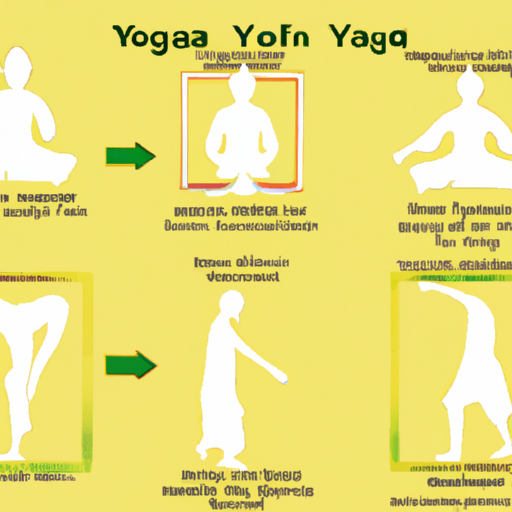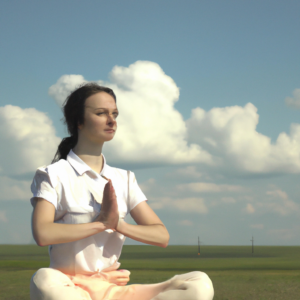“Explore the 4 Paths of Yoga: Find Your True Self”
Introduction
Yoga is an ancient practice that has been around for centuries. It is a holistic approach to physical, mental, and spiritual well-being. There are four main paths of yoga: Bhakti, Jnana, Karma, and Raja. Bhakti yoga is the path of devotion and love, Jnana yoga is the path of knowledge and wisdom, Karma yoga is the path of selfless action, and Raja yoga is the path of meditation and contemplation. Each path has its own unique set of practices and philosophies that can help individuals to achieve a greater sense of balance and harmony in their lives. By exploring these four paths of yoga, individuals can gain a deeper understanding of themselves and the world around them.
The History and Origins of the 4 Paths of Yoga
Yoga is an ancient practice that has been used for centuries to promote physical, mental, and spiritual wellbeing. It is believed to have originated in India over 5,000 years ago and has since spread to many parts of the world. The practice of yoga is based on four distinct paths, each of which has its own unique approach to achieving physical, mental, and spiritual balance.
The first path of yoga is known as Raja Yoga, or the “royal path.” This path focuses on the development of the mind and the control of the senses. It emphasizes the practice of meditation and the use of various techniques to achieve a state of inner peace and harmony.
The second path of yoga is known as Bhakti Yoga, or the “devotional path.” This path focuses on the cultivation of love and devotion to a higher power. It emphasizes the practice of prayer and worship, as well as the cultivation of virtues such as compassion and kindness.
The third path of yoga is known as Jnana Yoga, or the “path of knowledge.” This path focuses on the development of wisdom and understanding. It emphasizes the study of philosophy and the practice of contemplation.
The fourth path of yoga is known as Karma Yoga, or the “path of action.” This path focuses on the practice of selfless service and the cultivation of virtues such as generosity and humility. It emphasizes the practice of performing one’s duties without attachment to the results.
These four paths of yoga are all interconnected and can be used in combination to achieve physical, mental, and spiritual balance. Each path has its own unique approach to achieving this balance, and it is up to the individual to decide which path is best suited to their needs.
How to Incorporate the 4 Paths of Yoga into Your Daily Life
The four paths of yoga are Bhakti, Karma, Jnana, and Raja. Each of these paths offers a unique approach to living a life of balance and harmony. By incorporating the four paths of yoga into your daily life, you can create a more meaningful and fulfilling experience.
Bhakti yoga is the path of devotion and surrender. It is the practice of cultivating a deep connection with the divine through prayer, chanting, and meditation. To incorporate Bhakti yoga into your daily life, you can begin each day with a few moments of prayer or meditation. You can also set aside time each day to chant mantras or sing devotional songs.
Karma yoga is the path of selfless service. It is the practice of performing actions without attachment to the results. To incorporate Karma yoga into your daily life, you can look for opportunities to serve others without expecting anything in return. This could include volunteering at a local charity, helping a neighbor, or simply offering a kind word to someone in need.
Jnana yoga is the path of knowledge and wisdom. It is the practice of cultivating a deeper understanding of the self and the world around us. To incorporate Jnana yoga into your daily life, you can set aside time each day to read spiritual texts or engage in philosophical discussions. You can also practice mindfulness and self-reflection to gain insight into your thoughts and feelings.
Raja yoga is the path of meditation and contemplation. It is the practice of stilling the mind and connecting with the divine. To incorporate Raja yoga into your daily life, you can set aside time each day to practice meditation. You can also use visualization techniques to help you focus and relax.
By incorporating the four paths of yoga into your daily life, you can create a more meaningful and fulfilling experience. Through prayer, service, knowledge, and meditation, you can cultivate a deeper connection with the divine and find balance and harmony in your life.
Exploring the Benefits of Jnana Yoga
It is the philosophical path. The focus of this path is to gain the ability to distinguish between reality and unreality. To attain Self-Knowledge through study, practice and experience. Jnana Yoga is a form of yoga that focuses on the development of wisdom and knowledge. It is one of the four main paths of yoga, and is often referred to as the “yoga of knowledge”. This type of yoga is based on the teachings of the ancient Indian sage Patanjali, who wrote the Yoga Sutras.
The practice of Jnana Yoga involves the study of scriptures, contemplation, and meditation. Through these practices, practitioners strive to gain insight into the true nature of reality and to develop a deeper understanding of the self. This type of yoga is said to lead to a state of enlightenment, or moksha, which is the ultimate goal of yoga.
The benefits of Jnana Yoga are numerous. It can help to reduce stress and anxiety, improve concentration and focus, and increase self-awareness. It can also help to cultivate a sense of inner peace and contentment. Additionally, it can help to foster a greater understanding of the interconnectedness of all things, and to develop a deeper appreciation for the beauty of life.
Jnana Yoga is a powerful practice that can help to bring about profound transformation in one’s life. It can help to open the door to a greater understanding of the self and the world around us. By engaging in this type of yoga, practitioners can gain insight into the true nature of reality and develop a deeper connection to the divine.
Exploring the Benefits of Karma Yoga
It is the path of action. It deals with the law of cause and effect. Each action has a corresponding reaction, on one’s body, mind and consciousness. The outcome of an action is dependent upon its ethical value and the intention with which it was carried out.
Karma yoga is a spiritual practice that has been around for centuries. It is a form of yoga that focuses on selfless service and the cultivation of inner peace. The practice of karma yoga is based on the belief that our actions have consequences, both positive and negative. By engaging in selfless service, we can create positive karma and ultimately lead to a more peaceful and fulfilling life.
Karma yoga is a practice that encourages us to be mindful of our actions and to act with compassion and kindness. It teaches us to be generous and to give without expecting anything in return. This practice helps us to cultivate a sense of inner peace and contentment, as well as a greater sense of connection to the world around us.
Karma yoga also helps us to develop a sense of detachment from the material world. By engaging in selfless service, we can learn to let go of our attachment to material possessions and focus instead on the spiritual aspects of life. This can help us to become more mindful of our actions and to live in the present moment.
Karma yoga can also help us to develop a sense of purpose and direction in life. By engaging in selfless service, we can learn to focus on our goals and to take action towards achieving them. This practice can help us to become more mindful of our actions and to live with intention.
Finally, karma yoga can help us to cultivate a sense of inner strength and resilience. By engaging in selfless service, we can learn to be more accepting of our circumstances and to find peace and contentment in the present moment. This practice can help us to become more resilient in the face of adversity and to find strength in difficult times.
Karma yoga is a powerful practice that can help us to cultivate inner peace, a sense of purpose, and resilience. By engaging in selfless service, we can create positive karma and ultimately lead to a more peaceful and fulfilling life.
Exploring the Benefits of Raja Yoga


It is also known as the “Royal Path of Yoga” or the “Eight Step Path”. It is the path of self-discipline and contains, amongst other things, those Yoga techniques that are familiar to us such as Asanas, Pranayama, Meditation and Kriyas.
Raja Yoga is an ancient practice that has been used for centuries to help individuals achieve a greater sense of peace, balance, and harmony in their lives. This form of yoga is based on the teachings of Patanjali, an Indian sage who wrote the Yoga Sutras, a collection of 196 aphorisms that provide guidance on how to live a meaningful and fulfilling life. Raja Yoga is a form of yoga that focuses on the development of the mind and the cultivation of inner peace.
The practice of Raja Yoga involves the use of various techniques, such as meditation, pranayama (breathing exercises), and asana (postures). These techniques are designed to help the practitioner become more aware of their body, mind, and spirit, and to cultivate a greater sense of inner peace and balance. Through the practice of Raja Yoga, individuals can learn to control their thoughts and emotions, and to become more mindful of their actions.
The practice of Raja Yoga can also help individuals to develop greater self-awareness and to gain a better understanding of their true nature. By cultivating a greater sense of self-awareness, individuals can become more aware of their own thoughts, feelings, and behaviors, and can learn to make better choices in their lives.
The practice of Raja Yoga can also help individuals to develop greater mental clarity and focus. Through the practice of meditation and pranayama, individuals can learn to quiet their minds and to become more aware of their thoughts and feelings. This can help individuals to become more focused and productive in their daily lives.
Finally, the practice of Raja Yoga can help individuals to develop greater physical health and wellbeing. Through the practice of asana, individuals can learn to strengthen and stretch their bodies, and to become more aware of their physical health. This can help individuals to become more physically fit and healthy, and to reduce their risk of developing certain illnesses and diseases.
Overall, the practice of Raja Yoga can provide individuals with a variety of benefits, including greater mental clarity, physical health, and emotional wellbeing. By cultivating a greater sense of self-awareness and inner peace, individuals can learn to make better choices in their lives and to live a more meaningful and fulfilling life.
The breathing and asana (postures) part of Raja Yoga are known as Hatha yoga.Exploring the Benefits of Hatha Yoga
Hatha yoga is an ancient practice that has been used for centuries to promote physical and mental wellbeing. It is a form of yoga that combines physical postures, breathing exercises, and meditation. The practice of Hatha yoga can help to improve physical health, mental clarity, and emotional balance.
Physically, Hatha yoga can help to improve flexibility, strength, and balance. The postures and movements of Hatha yoga can help to increase range of motion, improve posture, and reduce the risk of injury. Regular practice can also help to reduce stress and tension in the body, improve circulation, and increase energy levels.
Mentally, Hatha yoga can help to improve focus and concentration. The practice of mindful breathing and meditation can help to reduce stress and anxiety, and improve clarity of thought. It can also help to cultivate a sense of inner peace and calm.
Emotionally, Hatha yoga can help to reduce feelings of anger, fear, and sadness. The practice of mindful breathing and meditation can help to cultivate a sense of inner peace and contentment. It can also help to reduce feelings of stress and anxiety, and improve overall emotional wellbeing.
Overall, the practice of Hatha yoga can provide numerous physical, mental, and emotional benefits. It can help to improve physical health, mental clarity, and emotional balance. Regular practice can help to reduce stress and tension in the body, improve focus and concentration, and cultivate a sense of inner peace and contentment. For these reasons, Hatha yoga is an excellent practice for anyone looking to improve their overall wellbeing.
Exploring the Benefits of Bhakthi yoga
It is the path of devotion and love for God and for the whole of creation – animals, as well as humans, and all of nature. Bhakti yoga is a spiritual practice that has been practiced for centuries in India and is now gaining popularity in the West. It is a form of yoga that focuses on cultivating devotion and love for the divine. Bhakti yoga is a practice of connecting with the divine through prayer, chanting, and meditation.
The practice of Bhakti yoga has many benefits for practitioners. It can help to reduce stress and anxiety, as well as improve overall mental and physical health. Practicing Bhakti yoga can also help to cultivate a sense of inner peace and contentment. Additionally, it can help to foster a deeper connection with the divine, allowing practitioners to experience a greater sense of joy and fulfillment.
Bhakti yoga can also help to cultivate a sense of compassion and understanding for others. Through the practice of Bhakti yoga, practitioners can learn to be more accepting and tolerant of others, regardless of their beliefs or backgrounds. This can help to create a more harmonious and peaceful environment for everyone.
Finally, Bhakti yoga can help to foster a sense of connection with the divine. Through the practice of Bhakti yoga, practitioners can learn to open their hearts and minds to the divine, allowing them to experience a greater sense of peace and joy. This can help to create a more meaningful and fulfilling life.
Overall, Bhakti yoga is a powerful practice that can help to improve mental and physical health, foster a sense of inner peace and contentment, cultivate compassion and understanding for others, and create a deeper connection with the divine. For these reasons, Bhakti yoga is an excellent practice for anyone looking to improve their overall wellbeing.
Conclusion
The four paths of yoga provide a comprehensive approach to spiritual growth and development. Each path offers its own unique benefits and challenges, and can be used to help individuals reach their highest potential. Whether you are looking for physical, mental, emotional, or spiritual growth, there is a path of yoga that can help you reach your goals. With dedication and practice, you can use the four paths of yoga to create a life of balance, harmony, and peace.





